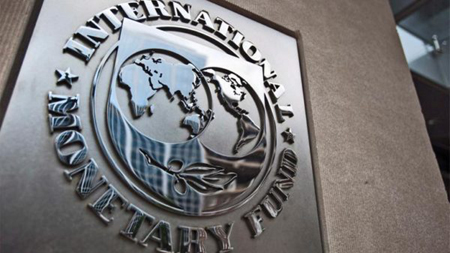
UPDATE: IMF MAINTAINS 2024 GLOBAL GROWTH FORECAST AT 3.2%
In a study released on Tuesday, the IMF downgraded its projections for both the US and Japan while maintaining its predictions for global growth in 2024 and cautioning about the risks of inflation and trade tensions in the future.
In its World Economic Outlook update, the IMF maintained its prediction from April that the global economy would expand by 3.2% this year.
“Global activity and world trade firmed up at the turn of the year, with trade spurred by strong exports from Asia, particularly in the technology sector,” said the fund.
It projects 3.3 percent worldwide growth in 2025.
However, the IMF noted what it called noteworthy shocks in Japan and the US during the first three months of this year, despite the fact that many nations enjoyed greater growth than predicted.
The Washington-based lender also issued a warning, pointing out that rising inflation concerns are holding back deflation as service costs continue to rise.
This increases the prospect of interest rates staying elevated for longer, “in the context of escalating trade tensions and increased policy uncertainty.”
An area of concern is trade and industrial policy, with countries potentially adopting measures that impact the global economy’s integration, said IMF chief economist Pierre-Olivier Gourinchas.
Asked if risk assessments have shifted after the attempted assassination of former US President Donald Trump, the Republican Party’s nominee in November’s election, Gourinchas noted the fund will consider its implications.
While world growth appears stable, the IMF has lowered projections for the United States and Japan.
US growth in 2024 was downgraded to 2.6 percent, 0.1 percentage points below April’s forecast, due to a “slower-than-expected start to the year,” said the fund.
Japan’s economy was seen expanding 0.2 percentage points less than expected, by 0.7 percent this year.
This was mainly thanks to temporary supply disruptions and weak private investment in the first quarter.
The euro area meanwhile is showing signs of recovery, with relatively strong services activity, Gourinchas said, although manufacturing shows weakness.
China and India are expected to power activity in Asia — with China’s 2024 forecast revised up to 5.0 percent on a private consumption rebound and strong exports.
India, meanwhile, is set to grow 7.0 percent, partly on better prospects for consumption.
Gourinchas also flagged risks to China stemming from weak confidence and unresolved property sector problems.
Should domestic demand weaken, China would rely more on the external sector — a situation that countries like the United States are pushing back against.
There also remain risks of sticky inflation amid renewed trade or geopolitical tensions, the IMF cautioned, even as it expects inflation to return to target by end-2025.
Wage growth, if accompanied by weak productivity, could make it tough for firms to ease price increases.
An escalation of trade tensions could also raise near-term inflation risks, by lifting costs of imported goods, IMF said.
Higher inflation could heighten the chances that interest rates stay elevated for longer, increasing financial risks.
The IMF called for careful monetary policy adjustments.
A resurgence of tariffs can also trigger retaliation and a “costly race to the bottom,” said the report.
Another source of uncertainty is the chance of “significant swings in economic policy as a result of elections this year, with negative spillovers to the rest of the world.”
AFP
![]()
